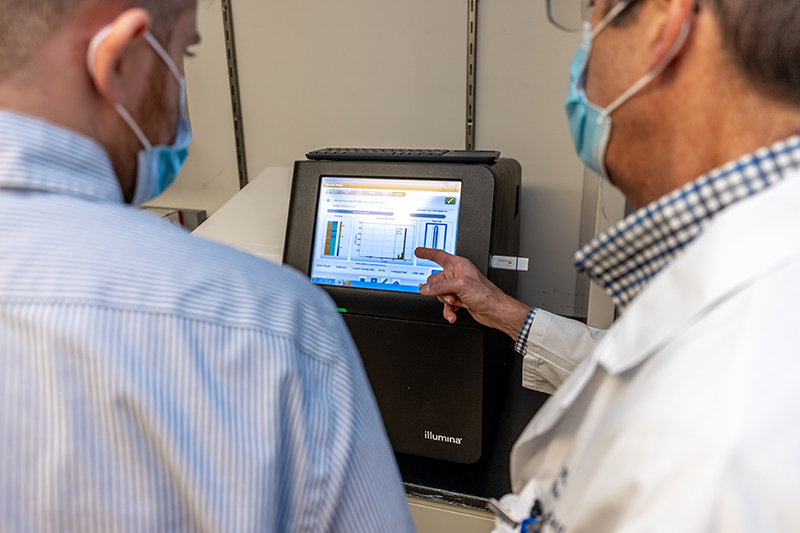AI and Genomic Surveillance Combine To Detect Health Care Infectious Disease Outbreaks
Aaron AupperleeWednesday, November 17, 2021Print this page.

By coupling machine learning with whole genome sequencing, Carnegie Mellon University and University of Pittsburgh School of Medicine scientists have greatly improved the quick detection of infectious disease outbreaks within a hospital setting.
The Enhanced Detection System for Healthcare-Associated Transmission (EDS-HAT) couples the recent development of affordable genomic sequencing with computer algorithms connected to the vast trove of data in electronic health records. When the sequencing detects that any two or more patients in a hospital have near-identical strains of an infection, machine learning quickly mines those patients' electronic health records for commonalities — whether that be proximity of hospital beds, a procedure using the same equipment or a shared health care provider. It then alerts infection preventionists to investigate and halt further transmission.
The results, published today in the journal Clinical Infectious Diseases, indicate a way for health systems to identify and then stop hospital-based infectious disease outbreaks in their tracks, cutting costs and saving lives.
"The current method used by hospitals to find and stop infectious disease transmission among patients is antiquated. These practices haven't changed significantly in over a century," said senior author Dr. Lee Harrison, professor of infectious diseases at Pitt's School of Medicine and epidemiology at Pitt's Graduate School of Public Health. "Our process detects important outbreaks that would otherwise fly under the radar of traditional infection prevention monitoring."
Ordinarily, this process requires clinicians to notice that two or more patients have a similar infection and alert their infection prevention team, which then reviews patient records to attempt to uncover how the infection was transmitted.
"EDS-HAT can quickly detect and characterize an emerging outbreak, helping hospitals take swift and precise actions to stop a bug from spreading," said Artur Dubrawski, the Alumni Research Professor of Computer Science at CMU and a member of the research team. "The algorithm corroborates information from the existing hospital's surveillance procedures and electronic health records to improve both the detection of new events and the determination of the most likely pathways of disease transmission."
From November 2016 to November 2018, UPMC Presbyterian Hospital ran EDS-HAT with a six-month lag for a few select infectious pathogens often associated with health care-acquired infections nationwide, while continuing with real-time, traditional infection prevention methods. The team then investigated how well EDS-HAT performed.
EDS-HAT detected 99 clusters of similar infections in that two-year period and identified at least one potential transmission route in 65.7% of those clusters. During the same period, infection prevention used whole genome sequencing to aid in the investigation of 15 suspected outbreaks, two of which revealed genetically related infections.
If EDS-HAT had been running in real-time, the team estimates as many as 63 transmissions of an infectious disease from one patient to another could have been prevented. It also would have saved the hospital as much as $692,500.
UPMC plans to introduce EDS-HAT in real time at UPMC Presbyterian Hospital and expects this innovation to benefit other infection prevention and control programs in the future. And the original EDS-HAT, which primarily focused on drug-resistant bacterial pathogens, will soon expand to incorporate sequencing of respiratory viruses, including COVID-19.
"Even though CMU does not have a medical school, we benefit greatly from partnering with our world-class neighbors at the University of Pittsburgh and UPMC to apply the results of our artificial intelligence research, such as the brains behind EDS-HAT, to advance public health and medicine," Dubrawski said.
This study was funded in part by National Institute of Allergy and Infectious Diseases grants R21 AI109459 and R01 AI127472.
Aaron Aupperlee | 412-268-9068 | aaupperlee@cmu.edu
